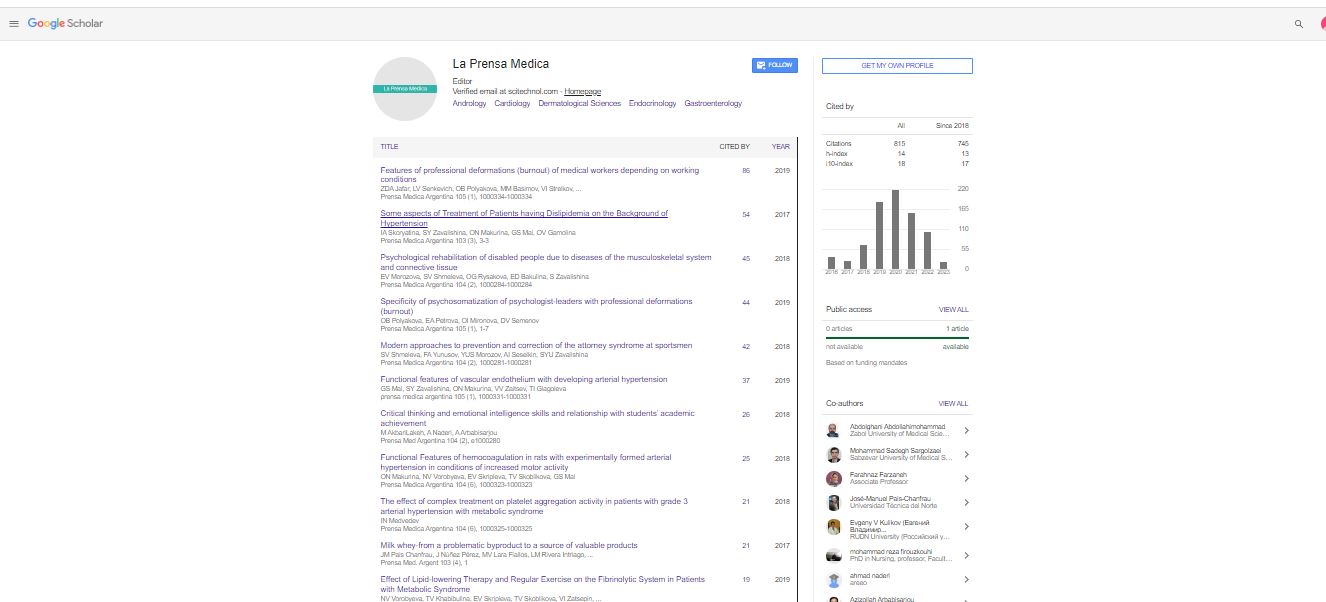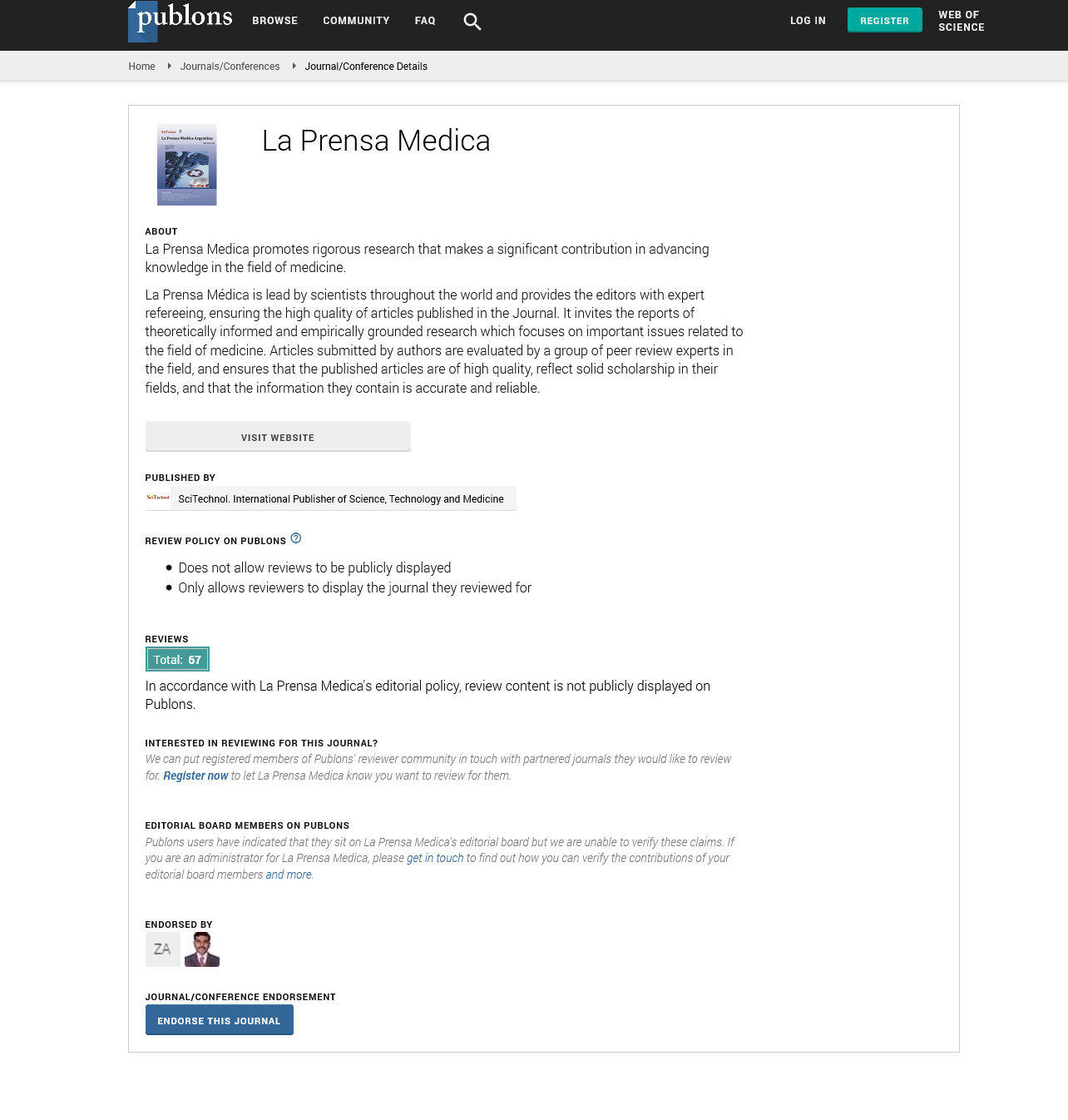Opinion Article, La Prensa Medica Vol: 109 Issue: 2
Development of Selective Ion Channel Modulators for Cardiac Arrhythmias
Yeonho Jeong*
1Department of Emergency Medicine, Seoul National University College of Medicine, Republic of Korea
*Corresponding Author: Yeonho Jeong,
Department of Emergency Medicine,
Seoul National University College of Medicine, Republic of Korea
E-mail: yenojng@hanmail.com
Received date: 25 April, 2023, Manuscript No. LPMA-23-102726;
Editor assigned date: 27 April, 2023, PreQC No. LPMA-23-102726 (PQ);
Reviewed date: 12 May, 2023, QC No. LPMA-23-102726;
Revised date: 19 May, 2023, Manuscript No. LPMA-23-102726 (R);
Published date: 26 May, 2023, DOI: 10.4172/0032-745X.1000156
Citation: Jeong Y (2023) Development of Selective Ion Channel Modulators for Cardiac Arrhythmias. La Prensa Medica 109:2.
Abstract
Description
Cardiac arrhythmias, characterized by abnormal heart rhythms, pose significant health risks and can lead to severe complications if left untreated. Traditional antiarrhythmic drugs often lack selectivity and can have undesirable side effects. The development of selective ion channel modulators has emerged as a promising approach to treat cardiac arrhythmias with enhanced efficacy and improved safety profiles. This study provides an overview of the development of selective ion channel modulators for cardiac arrhythmias, highlighting the key ion channels targeted, innovative design strategies, potential clinical implications, and ongoing research efforts.
Cardiac ion channels play a vital role in regulating the electrical activity of the heart. Alterations in the function of specific ion channels can disrupt the normal cardiac electrical signaling, leading to arrhythmias. Selective modulation of these ion channels presents an opportunity to restore the balance of electrical impulses and normalize heart rhythm. The key ion channels targeted for the development of selective modulators in cardiac arrhythmias include sodium channels (Nav), potassium channels (Kv), and calcium channels (Cav). Each channel plays a distinct role in the initiation and propagation of action potentials within cardiac cells. By modulating the activity of these ion channels, it is possible to restore the normal cardiac rhythm and prevent arrhythmia episodes. Developing selective ion channel modulators requires a deep understanding of the structure-function interlink of the target channels.
Structure-based drug design, computational modelling, and highthroughput screening techniques aid in the identification and optimization of lead compounds. One approach involves targeting specific regions or residues within the ion channel protein to selectively modulate their activity. This can be achieved by designing small molecules that interact with binding sites or allosteric regions associated with the ion channel. Rational drug design techniques help in the development of compounds with high affinity and selectivity for the target channels. Another strategy involves targeting specific isoforms or splice variants of the ion channels.
Different tissues or disease states may express unique isoforms of ion channels, and selectively modulating these variants can provide more tailored and precise therapeutic effects. Advances in selective modulator development include the use of peptidomimetics, antibodybased therapies, and gene therapies. Peptidomimetics mimic the activity of endogenous peptides that interact with ion channels, while antibody-based therapies utilize monoclonal antibodies to selectively block or modulate ion channel function. Gene therapies aim to modify the expression or function of specific ion channels through gene delivery approaches. The development of selective ion channel modulators holds great possibility for the treatment of cardiac arrhythmias. These modulators offer the potential for targeted therapy, minimizing off-target effects and reducing the risk of proarrhythmia.
Selective sodium channel blockers, such as those targeting Nav1.5, have shown remarkable efficacy in treating ventricular arrhythmias. Potassium channel modulators, including Kv11.1 (hERG) channel inhibitors, have been explored to prevent atrial fibrillation. Calcium channel modulators targeting Cav1.2 channels hold potential for the treatment of supraventricular tachyarrhythmia. Clinical trials are underway to assess the safety and efficacy of selective ion channel modulators in various cardiac arrhythmias. These trials aim to determine optimal dosing, long-term effects, and potential drug interactions. Additionally, efforts are being made to identify patient subgroups that may benefit the most from these selective modulators, taking into account genetic variations and specific ion channel expression patterns. The development of selective ion channel modulators represents an exciting frontier in the field of cardiac arrhythmia treatment.
Conclusion
By selectively targeting specific ion channels involved in arrhythmogenesis, these modulators offer the potential for improved efficacy and reduced side effects, paving the way for more personalized and effective therapeutic interventions. Ongoing research efforts continue to expand the understanding of the underlying mechanisms of cardiac arrhythmias and refine the design of selective modulators. With further advancements in drug discovery, computational modelling, and precision medicine, the future holds surety for the development of highly selective and potent ion channel modulators, revolutionizing the management of cardiac arrhythmias and improving patient outcomes.
 Spanish
Spanish  Chinese
Chinese  Russian
Russian  German
German  French
French  Japanese
Japanese  Portuguese
Portuguese  Hindi
Hindi 

